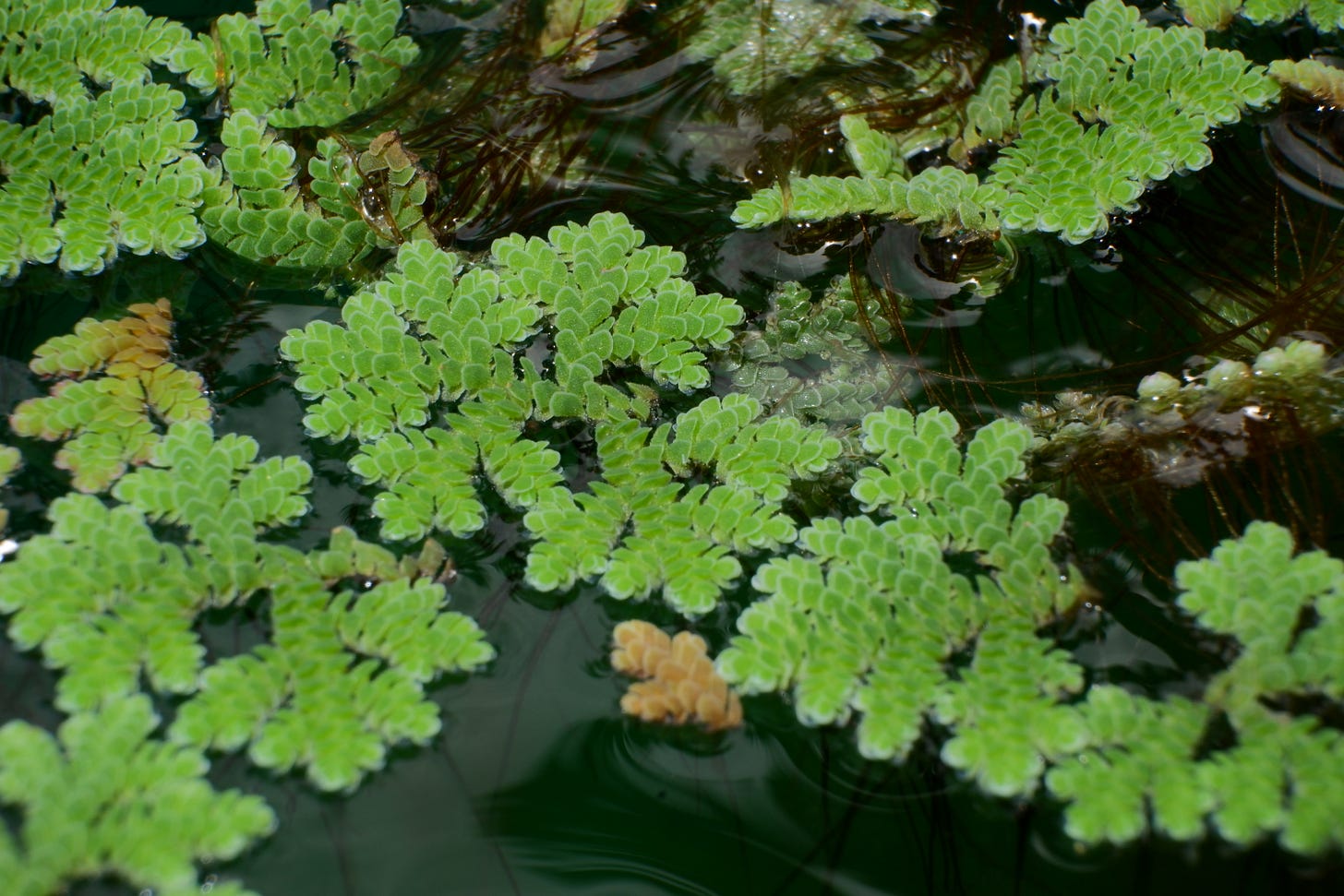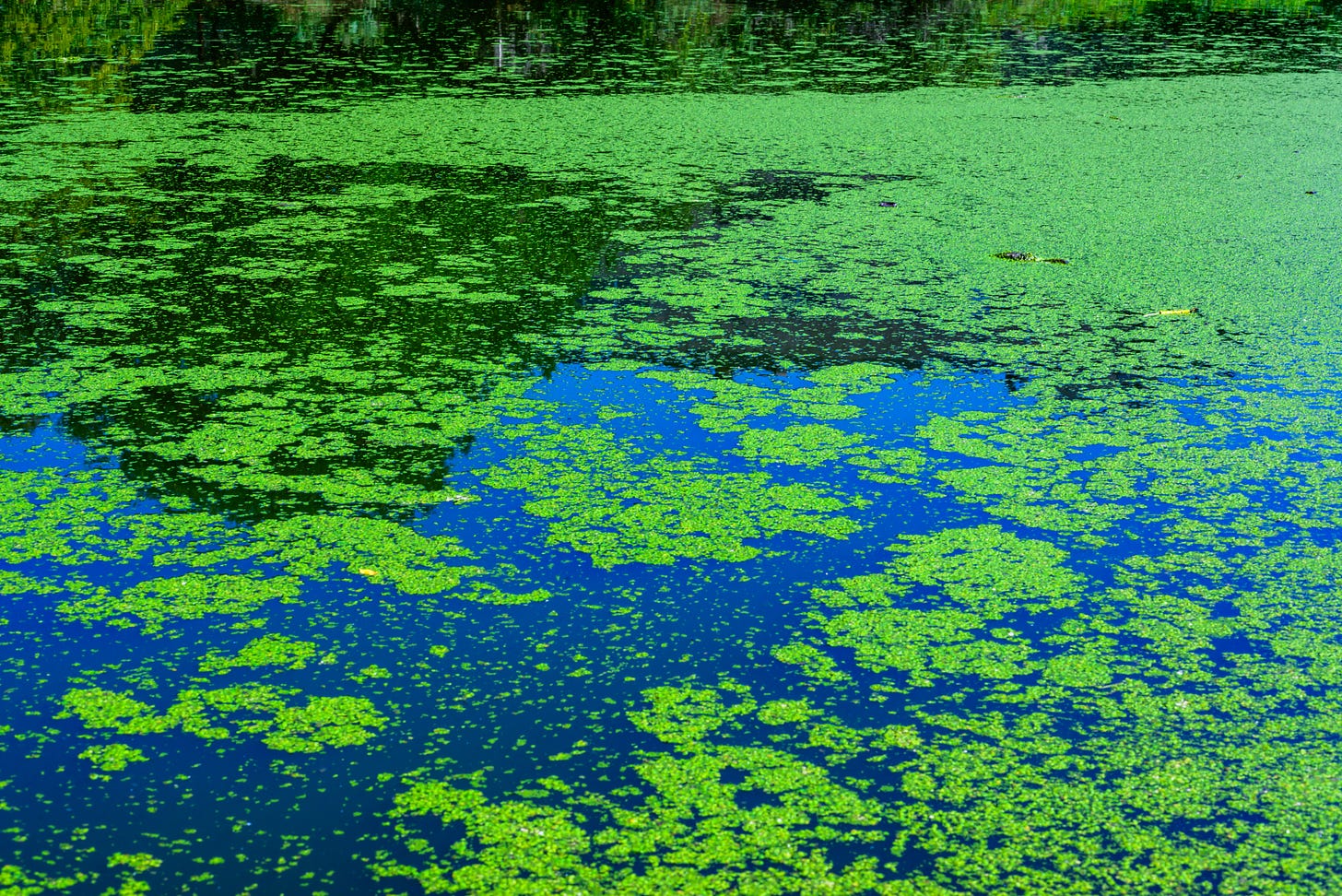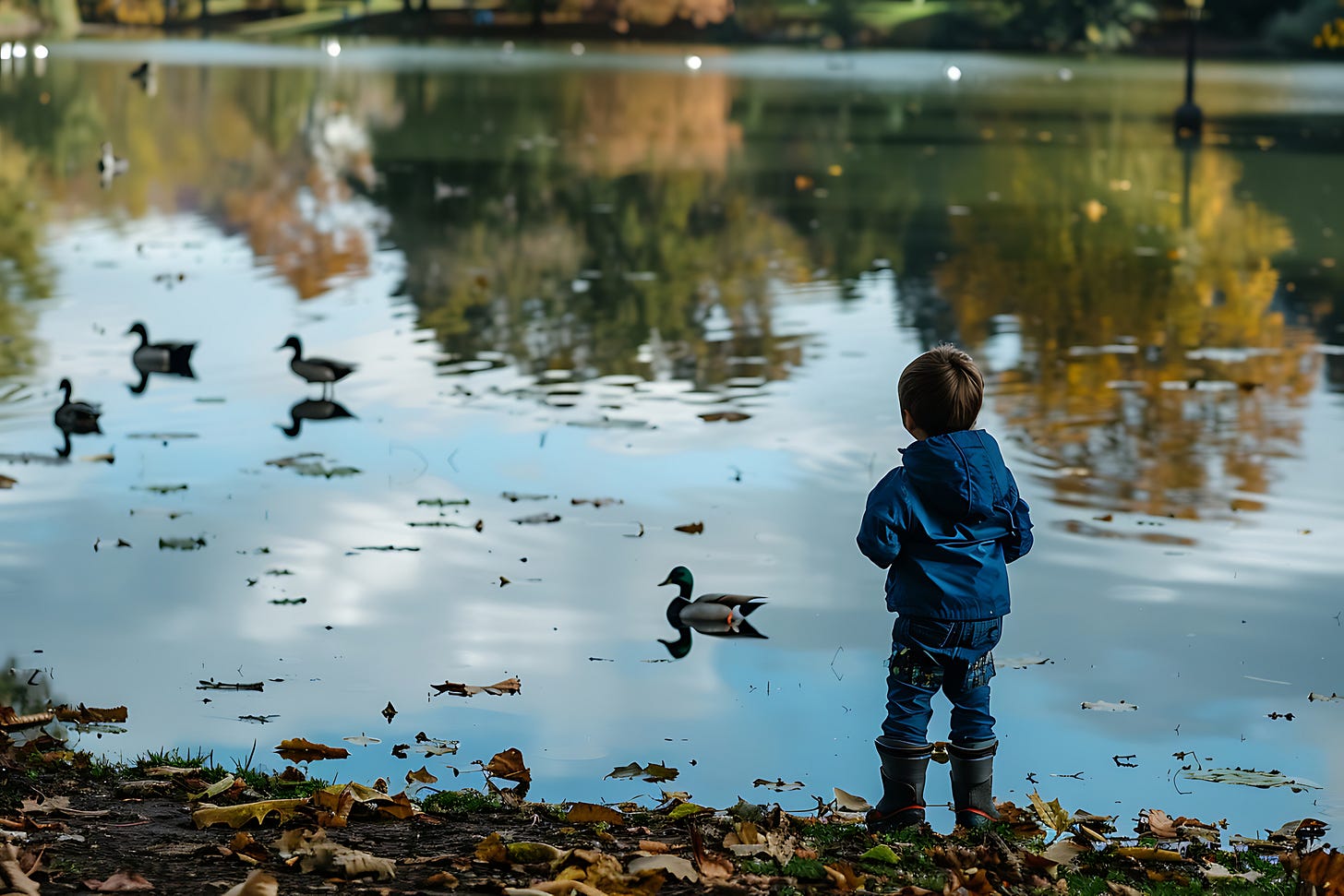Tiny But Mighty-The World's Smallest Fern
This Feathered Fern, No Bigger Than a Fingernail, Once Changed the Earth’s Climate--and Can Do It Again.
The Big Why: Nature Study Notes offers inspiration, seasonal observations, and simple activities that awaken curiosity and joy for everyone. I believe each family—regardless of location or background—can cultivate a deeper sense of connection, reverence, and resilience through time in nature. This newsletter is my way of sharing that gift. Because, when we help children fall in love with the earth, we give them something they will protect forever.
One early Saturday morning in late fall, my father and I set out for Saginaw Bay—a long, quiet inlet of Lake Huron—for a day of duck hunting. As one of six children, one-on-one time with dad were a treasure I cherished. The sun had not yet risen when we loaded our German short haired pointer, Jimmer, into the trunk and headed east.
We reached the slate-grey waters of the bay, the cattails straight and tall along the marsh edge, the ducks already calling—quack, quack—their voices carried across the water. Dad busied himself with the flat-bottom boat, his gear and dog, focused on the business of preparing for the hunt.
I wandered off to a still, pond-like inlet tucked into the reeds. As the sun’s light spilled across the still pond, it illuminated a blanket of floating green mass—undulating, delicate, and quietly alive. It seemed lit from within.
It was a fleeting impression—just a glimmer—before my dad called me, and the moment slipped away.
Years later, reading The Light Eaters: How the Unseen World of Plant Intelligence Offers a New Understanding of Life on Earth by Zoë Schlanger, I came across a passage that stopped me. Schlanger describes her first encounter with Azolla filiculoides—a fern so small and unassuming it is easily missed and yet as common as algae. It was so "tiny and so bright green it looked lit from within," she wrote.
As I read, the arc of time and memory curved backward—carrying me to a long-ago morning on the shores of Saginaw Bay. I was there again—at the water’s edge, the light just rising, and that shimmer of green floating on the surface.
So began my fascination with Azolla.
Where to Find Azolla
Azolla is easy to overlook. But once seen is unforgettable. Its tiny, overlapping leaves, no larger than a grain of rice, shimmer and turn shades of red and burgundy in cooler seasons. And beneath its delicate appearance lies a story so grand, it stretches back millennia and across the shaping of our planet’s climate.
Azolla lives in still or slow-moving waters. You’ll find it floating in ponds, ditches, shaded streams, and marshy spots where water lingers. It doesn’t shout for attention. It waits to be noticed.
A Floating Quilt That Cooled the Earth
In times so ancient we cannot count them, the Earth was a hothouse. Polar regions were warm, and the atmosphere was thick with carbon dioxide. Then, something unexpected happened: vast mats of Azolla began to bloom in the Arctic Ocean. They floated on the surface, undulating like living quilts, growing rapidly, soaking up CO₂, and sinking to the ocean floor when they died—trapping carbon and helping to cool the planet.
Scientists call this event the Azolla Event. What’s astonishing is that this one tiny fern may have helped initiate the planet’s long journey toward the cooler, more habitable climate we enjoy today.
Isn’t that something worth telling our children?
Scientists believe this simple plant helped draw huge amounts of carbon dioxide from the atmosphere, cooling the earth and changing the climate forever. This is not just a humble pond plant; it’s a climate hero!
Even now, Azolla grows rapidly, needs no soil, and has a built-in helper: a blue-green algae that lives inside the plant and captures nitrogen from the air. This means Azolla can enrich water and soil naturally, offering food for animals, nutrients for gardens, and a lesson in partnership for us all.
Azolla is intensely studied as a source of food during times of scarcity. In India Azolla is revered as a wonder plant, transforming smallholder farms for less than a dollar a year. In Japan, farmers use an azolla-rice-duck-fish system that provides farmers and their families with a diverse income without having to use chemical fertilizers or pesticides.
Is Azolla the Same as Duckweed?
Duckweed (Lemna spp.) and Azolla (Azolla spp.) are often seen floating side by side on the surface of still or slow-moving freshwater ponds and ditches, but they’re actually quite different. Duckweed is a tiny flowering plant, not a fern. It appears as small, round, bright green disks that float effortlessly on the water, usually with one or more tiny root threads dangling beneath. It reproduces rapidly and can quickly form a thick, green mat across the surface. In contrast, Azolla is a floating fern from an ancient plant family. Its feathery, overlapping leaves give it a soft, moss-like appearance. Azolla's colors shift from bright green to deep red or burgundy, especially in cool weather. It also partners with cyanobacteria that allow it to fix nitrogen—making it a natural soil enricher.
Nature Walk: Finding the Floating World
You don’t need to find Azolla to begin learning about it. On your next walk, head to a quiet pond, marsh, or ditch—anywhere water gathers and stays still.
As you walk, invite your child to:
Look for floating plants—smooth, round duckweed or clusters of green on the water’s surface.
Notice the shape and color of each plant. Are they bright green? Do they shimmer in the light? Do any have tiny roots hanging beneath?
Listen to the water sounds, birds, and insects. The world of Azolla is never silent.
Sit quietly and sketch what you see—no need for perfection, just attention.
Even if you don’t find Azolla, you’ll find something else: stillness, discovery, and the joy of paying close attention.
🌿 “To the child who notices, the world is always full of wonder.”
Art Activity: Azolla-Inspired Watercolor Mosaic
Objective: Learn about Azolla’s unique shape, texture, and color while encouraging creative expression.
What You’ll Need:
Watercolor paints (green, burgundy, soft red, brown, and blue)
Watercolor or heavy paper
A fine paintbrush or cotton swabs
A printed photo or drawing of Azolla for reference (optional but helpful)
Instructions:
Observe a photo of Azolla: its tiny overlapping leaves, soft feathery edges, and color variations from green to deep red.
Using the paintbrush or cotton swab, invite your child to create a floating mat of Azolla by painting small, irregular clusters of green ovals—almost like overlapping lily pads but much smaller.
Add depth with dabs of red, burgundy, and brown to reflect seasonal color shifts.
Around the “fern,” they can paint water ripples, pond insects, cattails, or birds to create a peaceful aquatic scene.
Learn More About the Art of Noticing Things LIke Azolla
The art of noticing—truly seeing the world around us—is not something we’re born knowing. It must be nurtured, cultivated gently through time and intention. -from Nature Study Companion
If you're longing to slow down, connect with nature, and inspire wonder in your children, I invite you to explore my book on Amazon. It’s a gentle guide to discovery walks, hands-on science, and meaningful moments in every season.
👉 Nature Study Companion: Simple Ways to Explore Wonders Near and Far
With awe and affection,
Sheila
Nature Study Notes





So the growth on the pond down the street is a Fern.